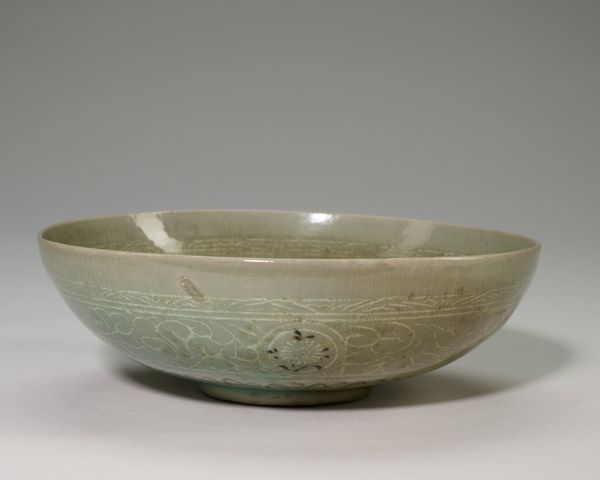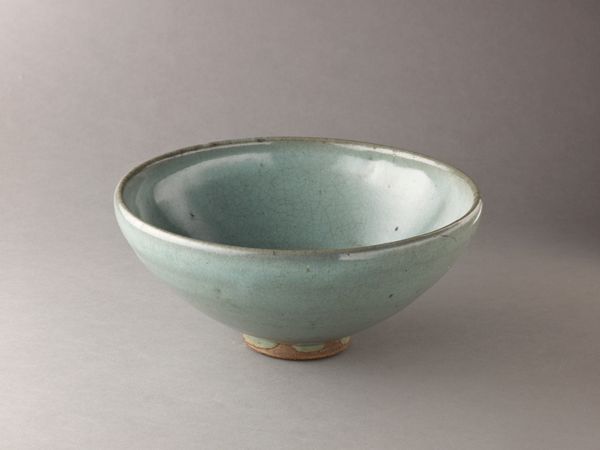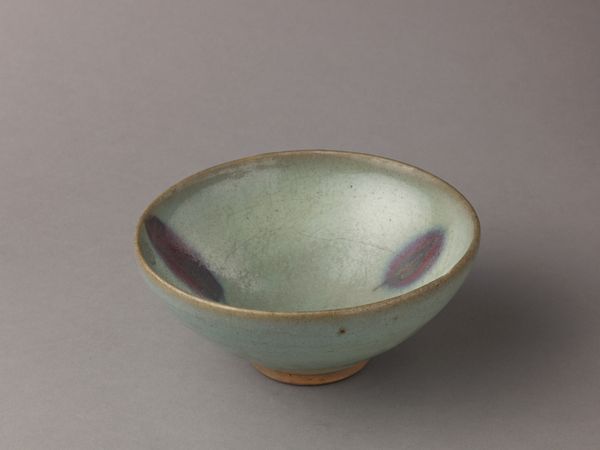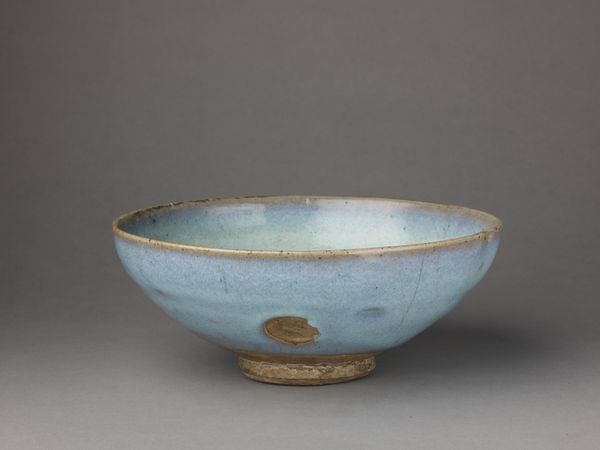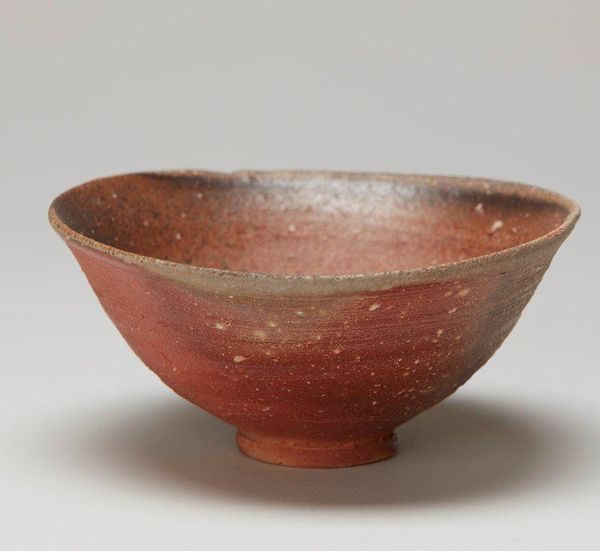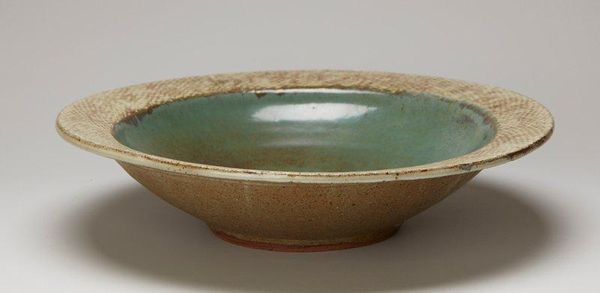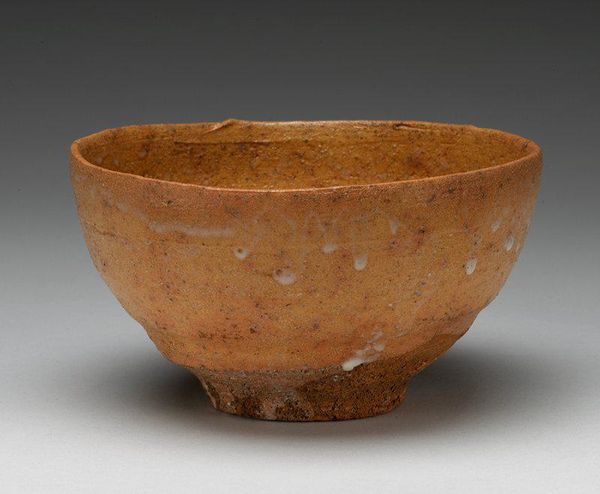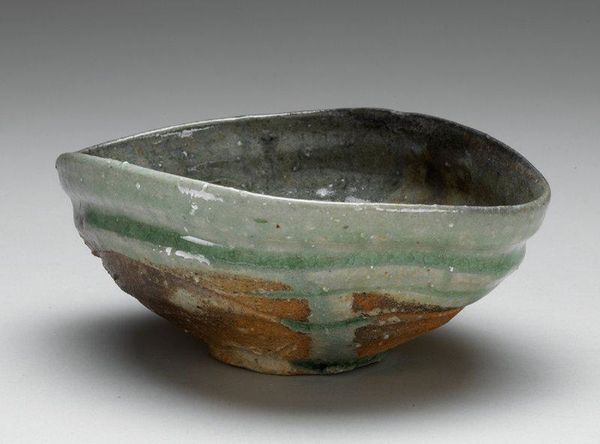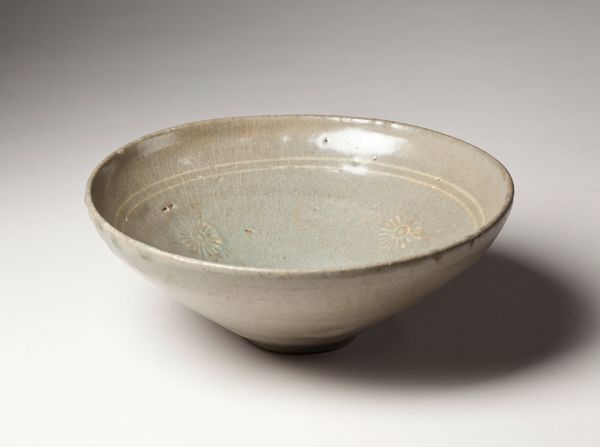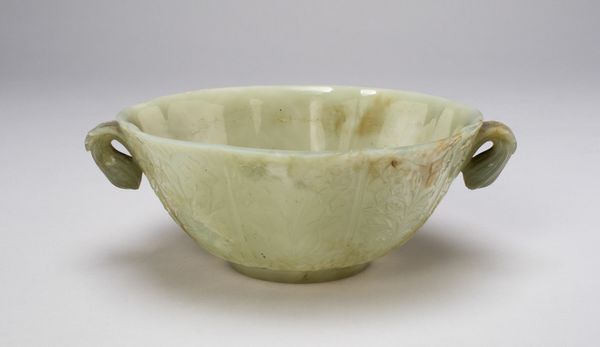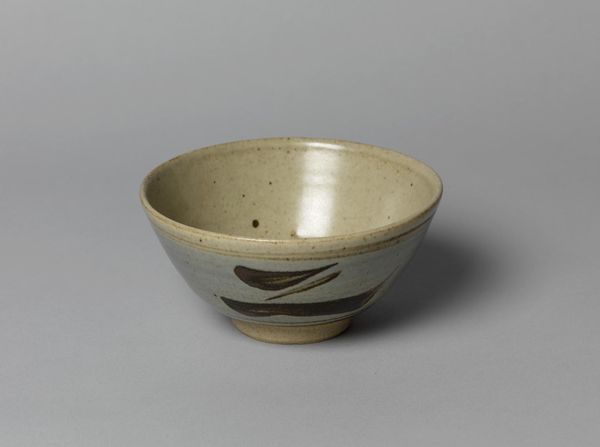
ceramic, earthenware
#
medieval
#
ceramic
#
form
#
earthenware
#
islamic-art
Dimensions: 2 3/4 x 7 3/4 in. (6.99 x 19.69 cm)
Copyright: Public Domain
Curator: Standing here before us is a seemingly simple yet evocative object: an earthenware bowl originating from the 12th or 13th century. The piece is part of the Minneapolis Institute of Art's collection and represents Islamic art from the medieval period. Editor: My immediate impression is one of gentle stillness. The colors, soft beige fading into a pale celadon green at the rim, give it a quiet, contemplative presence. The texture seems granular, earthy, holding the memory of its making. Curator: It's fascinating to consider the socio-cultural contexts that would have shaped its production and use. Earthenware was a common material, accessible to a wide segment of society, but its form and subtle decoration speaks to more specific uses, possibly ritualistic or domestic practices intertwined with cultural identity. Editor: Yes, the bowl form itself can be interpreted in so many ways. A container, a giver, a communal object, a receptacle. Looking at it from a feminist perspective, its curvature and internal space invites readings related to nurture, interiority, and perhaps even hidden power dynamics within the household. Curator: Precisely! And beyond domestic life, we must consider the symbolic weight attached to functional objects. Examining similar bowls discovered in specific archaeological sites may illuminate how food consumption, presentation, or the bowl’s mere presence played into medieval Islamic societal rituals. Editor: I wonder, though, about the traces of use visible on its surface, those faint imperfections. They speak of time, labour, and interaction— evidence of its role within a community and family that shaped not only this piece but who were also formed through its function as part of every day existance. How might it have impacted gender roles in its day-to-day context? Curator: These beautiful imperfections absolutely bring life to it, speaking volumes about the daily routines it would have been a part of. As we consider this medieval bowl from today's perspective, its humble form becomes a conduit to understanding those lives—reflecting their traditions, artistry, and socio-cultural realities through materiality and form. Editor: It’s striking to me that such a seemingly simple object could reveal these larger socio-political relationships of its time, all concentrated within this ceramic form. Curator: A testament to the power of art, even in the most quotidian form.
Comments
No comments
Be the first to comment and join the conversation on the ultimate creative platform.
